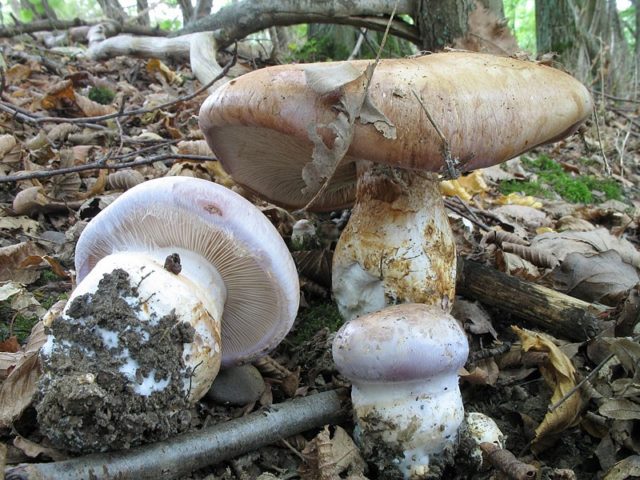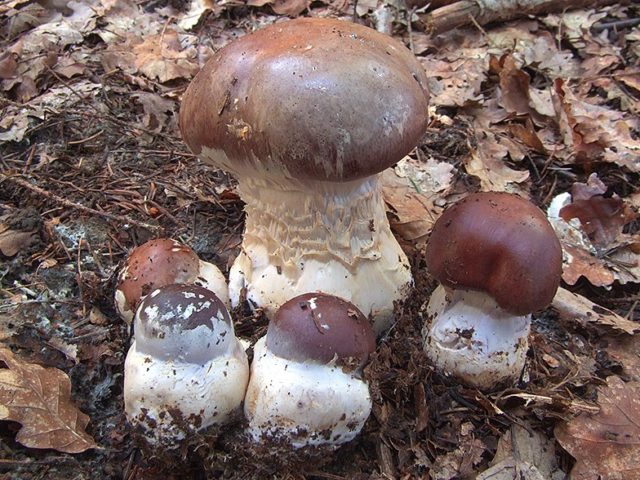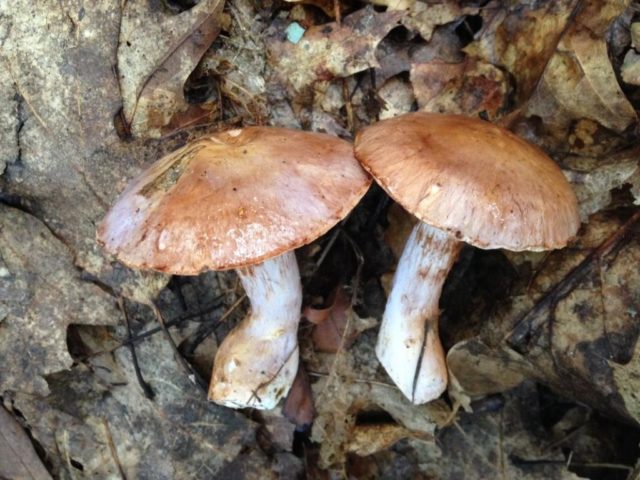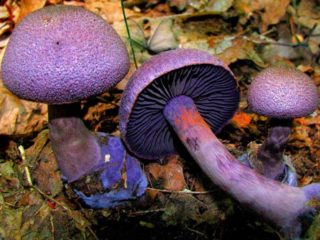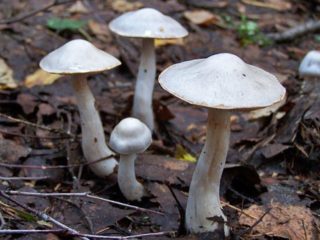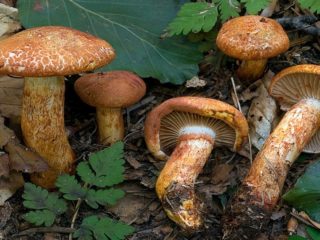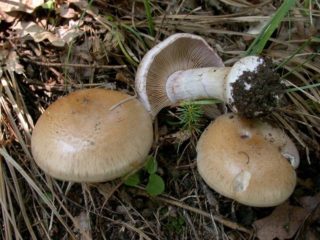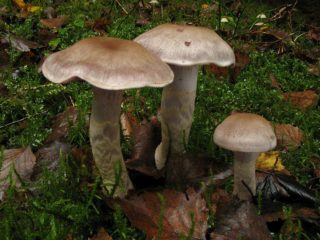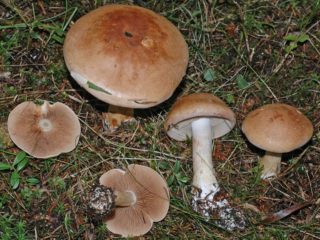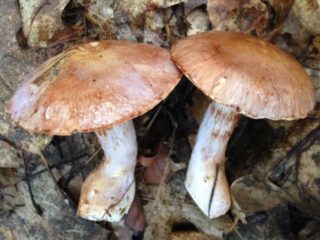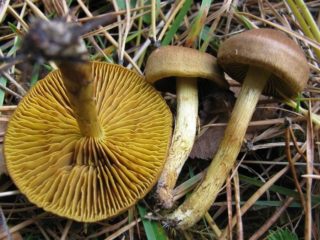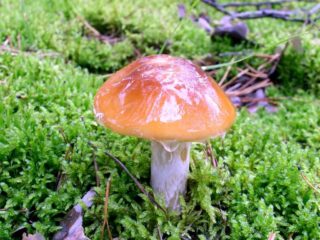Content
The oak cobweb is an inedible representative of the Cobweb family. Grows in large groups in deciduous forests. Fruits throughout the warm period. Since the species is not used in cooking, it is necessary to familiarize yourself with the external characteristics, view photos and videos.
What does the oak spider web look like?
The oak spider web is a lamellar mushroom. You need to start getting acquainted with it with a description of the cap and legs.
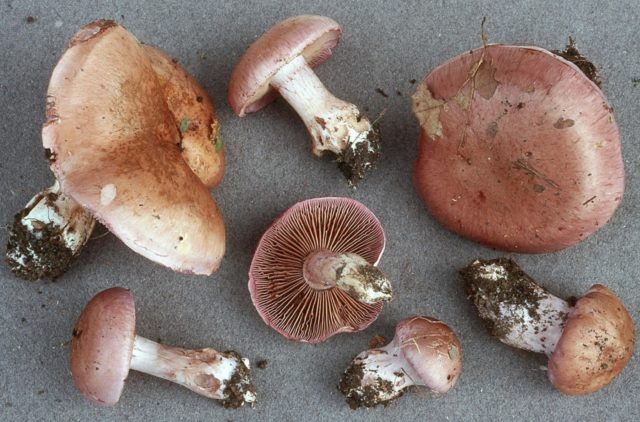
In young species, the lower layer is covered with a thin web
Description of the cap
The cap of young specimens is hemispherical in shape; as it grows, it straightens, becomes semi-convex and reaches 13 cm. The surface is covered with silky skin, which is covered with mucus on a rainy day.The young fruiting body is colored light purple; with age, the color changes to red-chocolate, with a pronounced lilac tint.
The whitish or light purple pulp has an unpleasant odor and a bland taste. Upon contact with alkali, the color changes to bright yellow. The lower layer is formed by small, partially adherent plates, light purple in color. As the plates grow older, they change color to coffee color. Reproduction occurs by elongated spores, which are located in dark powder.
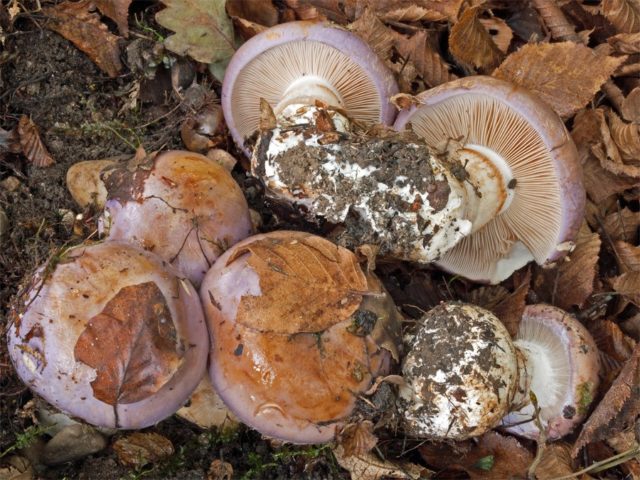
The hemispherical cap partially straightens over time
Description of the leg
The oak spider web has a dense, cylindrical leg 6-10 cm high. The surface is light purple or brown in color, sometimes you can see flakes from a torn bedspread on it.
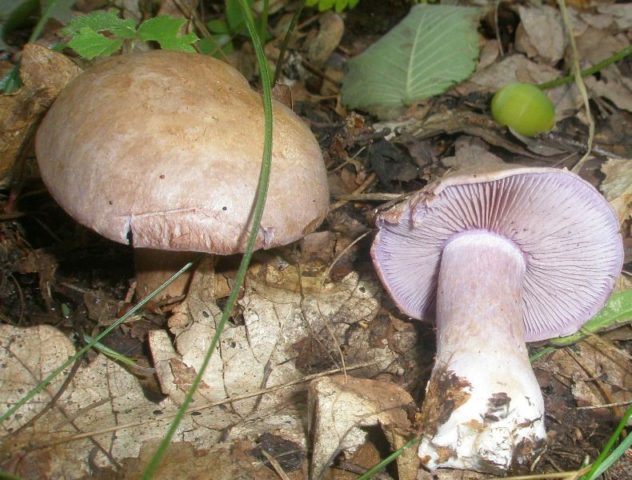
The oblong leg thickens towards the base
Where and how does it grow
Oak grove prefers to grow among broad-leaved trees in large families. Often found in the Moscow region, Krasnodar and Primorsky territories. Fruits from July until the first frost.
Is the mushroom edible or not?
The oak cobweb is an inedible species. Due to its unpleasant aroma and bland taste, the mushroom is not used in cooking. But if this forest dweller somehow ends up on the table, it will not cause much harm to the body, since there are no toxic or poisonous substances in the pulp. Intoxication can only occur in people with weakened immune systems in the form of nausea, vomiting and diarrhea.
Doubles and their differences
The oak grove, like any forest inhabitant, has similar counterparts, such as:
- bluish-banded - an inedible representative that grows in deciduous forests from August to October. It can be recognized by its grayish-brown cap and slimy stalk. The pulp is tasteless and odorless. Since this species is not consumed as food, if spotted, it is better to pass by.
- Excellent or magnificent - conditionally edible forest dweller. The mushroom has a small, hemispherical surface, chocolate-purple color. The pulp is dense, with a pleasant taste and aroma; upon contact with alkali, it acquires a brown color. After a long boil, the mushroom harvest can be fried, stewed, or canned.
- Stepson-shaped – a poisonous mushroom that, if eaten, causes severe food poisoning. The species can be recognized by its bell-shaped cap, up to 7 cm in size. The surface is velvety, copper-orange in color. The spore layer is formed by adherent chocolate plates with whitish jagged edges. White pulp, tasteless and odorless. Since the mushroom can cause irreparable harm to health, it is better to pass by when encountering it.
Conclusion
Oak grove webwort is a frequently encountered species. Prefers to grow in deciduous forests all summer. Since the species is not eaten as food, it is important to know the external characteristics and look at the photo.
